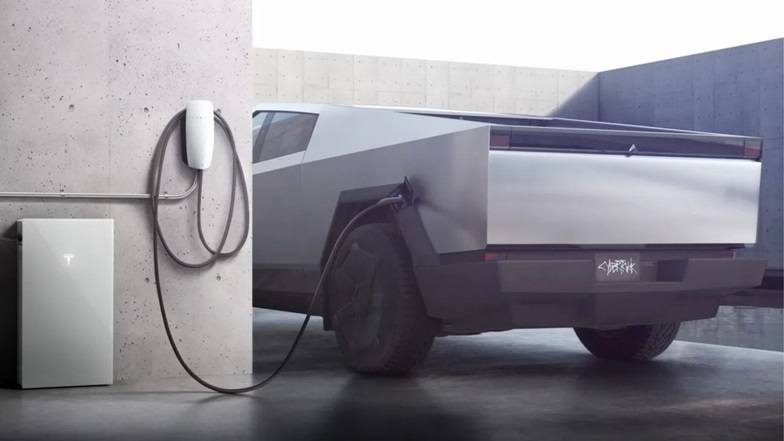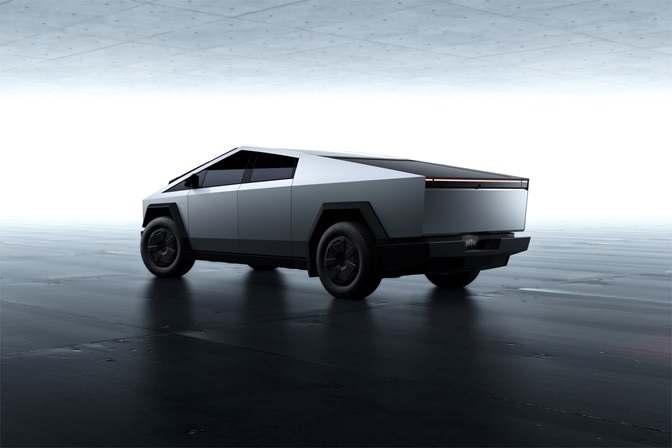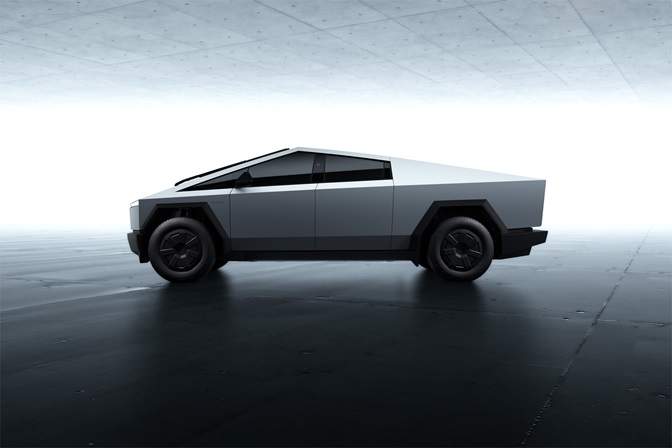Tesla’s Cybertruck is not just making waves as a revolutionary electric vehicle (EV), but it also comes with an exciting new feature: bidirectional charging. This allows the truck to not only charge its own battery but also supply power to your home during outages. Dubbed Powershare, this feature is designed to turn the Cybertruck into a massive energy backup system, enabling homeowners to use the vehicle’s battery for emergencies.
However, despite the potential, the rollout of Powershare has been slow and riddled with delays. In this article, we’ll take a look at what Powershare is, how it works, and the current status of its implementation.

What Is Powershare?
Powershare is a feature exclusive to Tesla’s Cybertruck, making it the first Tesla vehicle to offer bidirectional charging. With Powershare, Cybertruck owners can use their vehicle to send electricity back to their home, another EV, or virtually anything that requires power.
The most anticipated use for this technology is to power homes during blackouts. Owners can simply plug the Cybertruck into their home and tap into its large battery pack to keep the lights on, appliances running, and essential devices charged when the power grid goes down.
Delays in Powershare Rollout
Although Tesla has been delivering Cybertrucks for nearly a year now, many owners are still waiting to fully use the Powershare feature. Even with the physical installations completed, several users have reported that the system isn’t working as expected.
Some of the delays are due to local utility approvals, which are needed before the system can be connected to a home’s electrical grid. However, in many cases, the issue stems from Tesla’s software not being fully developed. This is not unusual for Tesla, as the company is known for rolling out hardware before the software is ready—just like it did with the Full Self-Driving (FSD) feature, which only began rolling out almost a year after the Cybertruck’s initial deliveries.

Tesla’s Update on Powershare Timelines
Tesla recently released an update on when Powershare will be available for different configurations of the Cybertruck. Here’s what to expect:
- Standard Cybertruck installations: Powershare will be enabled within one week of installation.
- Homes with solar backup: Powershare will be enabled by the end of the year.
- Homes with approved utility backup switches: Powershare will be enabled by the end of the year.
- Powerwall owners: Powershare integration will be available in 2025.
While it appears that most Cybertruck owners will have full access to Powershare by the end of the year, those who are pairing the feature with Tesla’s Powerwall—the residential battery pack that performs similar functions—will have to wait until next year.
| Comparison Box | Powershare | Powerwall |
|---|---|---|
| Launch Date | 2023-2025 rollout | Already available |
| Bidirectional Charging | Yes, with Cybertruck | No (Powerwall only stores energy) |
| Home Power Backup | Yes | Yes |
| Integration | With Cybertruck and solar | With solar and grid |
How Powershare and Solar Work Together
For those already using or considering solar power for their home, the combination of Powershare and solar panels offers a self-sustaining energy solution. By using solar energy to charge the Cybertruck’s battery during the day, homeowners can store that energy and use it to power their homes during an outage. This ensures that your home is not only independent of the grid but also running on renewable energy.
Tesla’s Powerwall already performs a similar function, storing excess energy produced by solar panels for later use. However, the integration of Powershare with a Cybertruck adds a mobile component to this system, meaning you can use the energy on the go or share it with others.
Renewable Energy and EVs: A Perfect Match
Electric vehicles like the Cybertruck are best powered by renewable energy, such as solar power. There’s no better energy source than the one you own, which is why many Cybertruck owners are also considering solar installations. Going solar reduces dependency on the grid, lowers electricity costs, and enhances the benefits of owning a bidirectional charging vehicle like the Cybertruck.
If you’re interested in solar energy, finding a reliable installer is key. EnergySage is a free service that connects homeowners with pre-vetted solar installers offering competitive pricing. By using this platform, you can save between 20-30% on installation costs compared to going it alone. Plus, it’s free to use, and you won’t get bombarded with sales calls unless you choose to share your phone number with a selected installer.

The Future of Powershare and EV Home Integration
Despite the current delays in Powershare’s rollout, this feature represents the future of EV and home energy integration. The ability to use your vehicle as a massive battery on wheels is not only convenient but could become a crucial feature for those living in areas prone to power outages.
Once Powershare is fully operational, Cybertruck owners will have access to a robust, flexible, and sustainable backup energy system that makes the most of both EV technology and renewable energy sources like solar. Whether it’s powering your home or charging another EV, the Cybertruck’s Powershare system is poised to become a game-changer in the world of home energy.
Is Powershare Worth the Wait?
Though the rollout has been slower than expected, Tesla’s Powershare is set to be a revolutionary feature for the Cybertruck. For homeowners seeking energy independence, especially those with solar installations, Powershare offers a glimpse into the future of energy management. As more configurations become available by the end of this year—and full integration with the Powerwall in 2025—Powershare will undoubtedly add value to Tesla’s Cybertruck, cementing its place as a versatile tool for both transportation and energy solutions.
If you’re already a Cybertruck owner or thinking of becoming one, Powershare could be one more reason to look forward to getting behind the wheel.
Related Post
